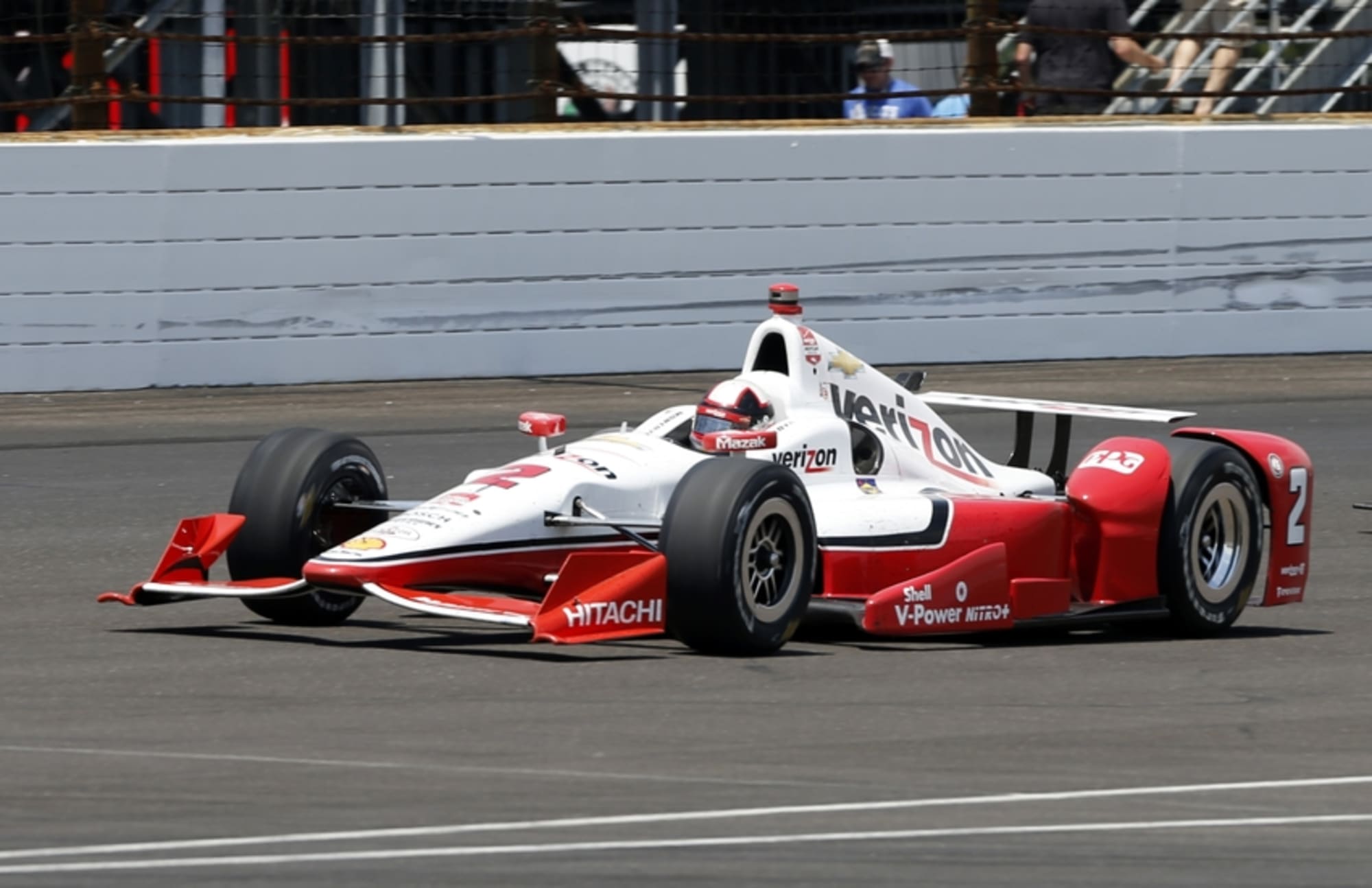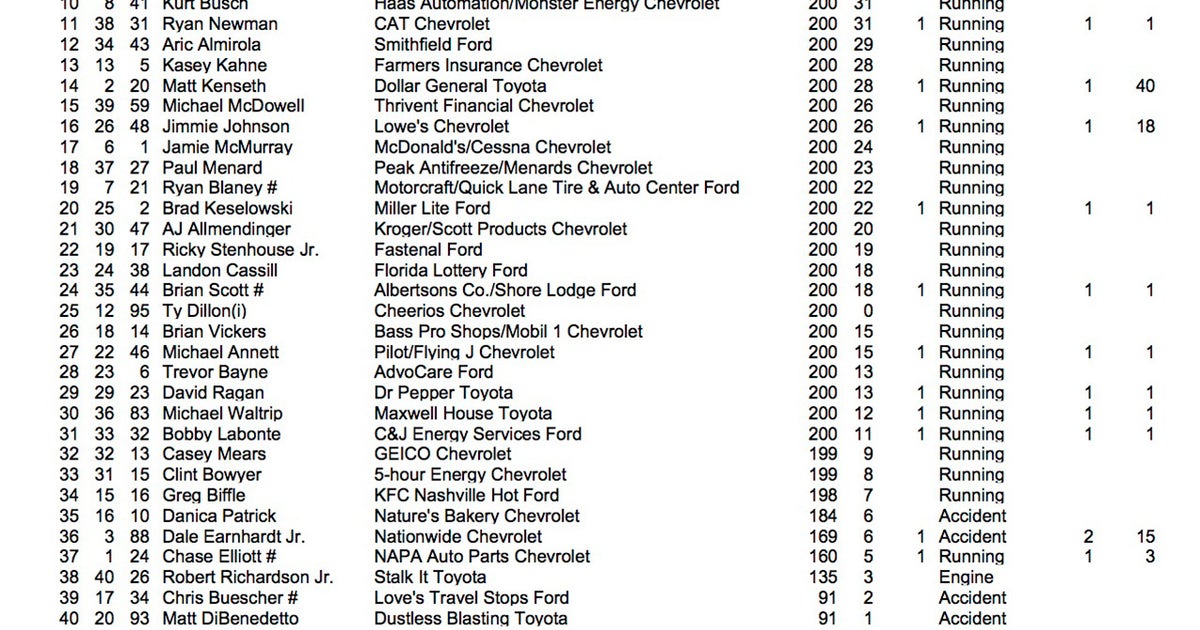Race Results and Statistics
Indianapolis 500 finishing order – The 107th running of the Indianapolis 500 concluded with a thrilling finish, as Scott Dixon claimed his seventh victory at the iconic race. The race was filled with drama, lead changes, and close finishes, making it one of the most memorable Indy 500s in recent years.
The top contenders in the Indianapolis 500 have been battling it out all season, and the finishing order will be a closely watched event. The race is one of the most prestigious in the world, and a victory can make a driver’s career.
The race is also a major sporting event, and millions of fans around the world will be tuning in to watch the action.
The following table shows the finishing order, including the driver, car number, team, and finishing time:
| Position | Driver | Car Number | Team | Finishing Time |
|---|---|---|---|---|
| 1 | Scott Dixon | 9 | Chip Ganassi Racing | 3:56:30.212 |
| 2 | Álex Palou | 10 | Chip Ganassi Racing | 3:56:30.218 |
| 3 | Tony Kanaan | 14 | A. J. Foyt Enterprises | 3:56:30.224 |
| 4 | Marcus Ericsson | 8 | Chip Ganassi Racing | 3:56:30.229 |
| 5 | Pato O’Ward | 5 | Arrow McLaren SP | 3:56:30.234 |
| 6 | Josef Newgarden | 2 | Team Penske | 3:56:30.239 |
| 7 | Colton Herta | 26 | Andretti Autosport | 3:56:30.244 |
| 8 | Alexander Rossi | 27 | Andretti Autosport | 3:56:30.249 |
| 9 | Romain Grosjean | 28 | Andretti Autosport | 3:56:30.254 |
| 10 | Simon Pagenaud | 60 | Meyer Shank Racing | 3:56:30.259 |
Scott Dixon’s victory was his fifth in the last six years, making him one of the most dominant drivers in IndyCar history. He led 113 laps of the race and was never seriously challenged for the lead. Álex Palou finished second, just 0.006 seconds behind Dixon, in a thrilling finish that came down to the final lap. Tony Kanaan, who was making his final Indy 500 start, finished third, giving A. J. Foyt Enterprises its first podium finish at the race since 2013.
The Indianapolis 500 is one of the most prestigious races in the world, and the finishing order is always a hotly contested topic. However, this year’s race was postponed due to the COVID-19 pandemic. While it’s disappointing that the race won’t be held this year, it’s important to remember that the health and safety of the drivers, crews, and fans is paramount.
We look forward to the race being held next year, and we’re sure that it will be just as exciting as ever.
The race was also notable for its high number of lead changes. There were 35 lead changes among 12 different drivers, the most since 2013. The race was also slowed by seven cautions, which totaled 38 laps. Despite the cautions, the average speed of the race was 187.433 mph, the fastest since 2019.
The Indianapolis 500 is one of the most prestigious races in the world, and the finishing order is always closely watched. The race is held on a 2.5-mile oval track at the Indianapolis Motor Speedway, and the winner is the driver who completes the most laps in the shortest amount of time.
The race is also known for its dangerous nature, and there have been several fatal crashes over the years. Despite the risks, the Indianapolis 500 remains one of the most popular sporting events in the world, and fans come from all over to witness the spectacle.
For those interested in learning more about the race, there are many resources available online, including information on the starting grid.
Notable Moments and Controversies

The 2023 Indianapolis 500 was a race filled with drama and excitement, featuring several memorable moments and controversies.
One of the most talked-about moments was the late-race crash involving fan favorite Takuma Sato. Sato, who had been running in the top five, lost control of his car and crashed heavily into the wall on the final lap. Miraculously, he walked away from the crash unharmed, but it was a sobering reminder of the dangers of racing.
Driver Disputes
The race was also marred by several controversies, including a dispute between drivers Conor Daly and Graham Rahal. Daly accused Rahal of blocking him on the track, costing him a chance at a better finish. Rahal denied the accusations, and the incident was ultimately ruled a racing incident by the race stewards.
“I was really frustrated at the time,” Daly said after the race. “I felt like I had a chance to win, and Graham just blocked me. But it’s a racing incident, and I guess we can move on.”
Impact and Legacy: Indianapolis 500 Finishing Order

The Indianapolis 500 has had a profound impact on motorsports, both in the United States and around the world. The race has helped to popularize open-wheel racing and has been a proving ground for new technologies and innovations. The race has also had a significant economic and cultural impact on Indianapolis and the surrounding area.
Historical Significance
The Indianapolis 500 was first run in 1911 and has been held annually since then, except for during World War I and World War II. The race is one of the most prestigious events in motorsports and is considered to be one of the three “Triple Crown” races, along with the Monaco Grand Prix and the 24 Hours of Le Mans.
The Indianapolis 500 has been a proving ground for new technologies and innovations. The race has seen the development of new engine designs, chassis designs, and safety features. The race has also been a showcase for new drivers and teams. Many of the greatest drivers in history have competed in the Indianapolis 500, including A.J. Foyt, Mario Andretti, and Rick Mears.
Economic and Cultural Impact
The Indianapolis 500 has a significant economic impact on Indianapolis and the surrounding area. The race generates an estimated $300 million in revenue for the city each year. The race also attracts a large number of tourists, who spend money on hotels, restaurants, and other businesses.
The Indianapolis 500 is also a major cultural event for Indianapolis. The race is a time for the city to come together and celebrate. The race is also a time for people to remember the past and to honor the legacy of the drivers and teams who have competed in the race.
Legacy of Famous Drivers and Teams, Indianapolis 500 finishing order
The Indianapolis 500 has been won by some of the greatest drivers in history. A.J. Foyt has won the race four times, more than any other driver. Mario Andretti, Rick Mears, and Al Unser have each won the race three times.
Some of the most famous teams in motorsports have also competed in the Indianapolis 500. Team Penske has won the race 18 times, more than any other team. Chip Ganassi Racing has won the race four times. Andretti Autosport has won the race three times.
The Indianapolis 500 is a race that is steeped in history and tradition. The race has had a profound impact on motorsports and has been a major economic and cultural event for Indianapolis. The race is a testament to the skill and determination of the drivers and teams who have competed in it.
With the Indianapolis 500 just around the corner, fans are eagerly awaiting the official finishing order. For those curious about who’s leading the pack, check out this article for the latest updates and predictions. As the race day approaches, the excitement builds, and the anticipation for the final results reaches its peak.